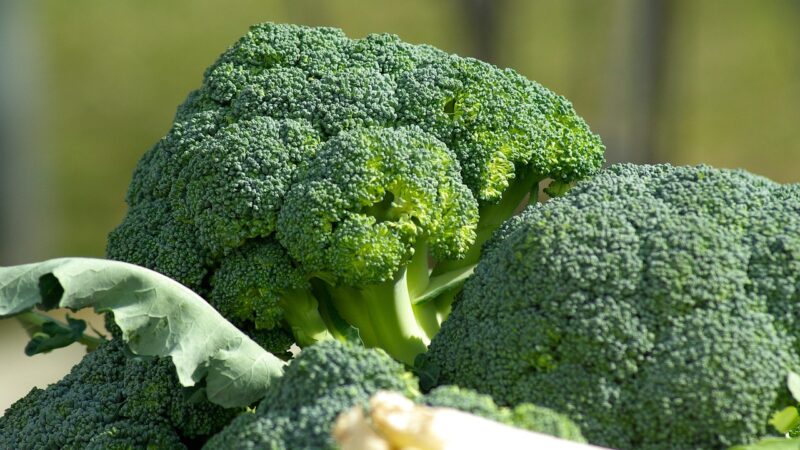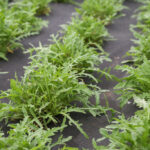The care of broccoli

Successful broccoli cultivation hinges on a deep understanding of the plant’s fundamental needs, from soil composition to timely harvesting. It is a cool-season crop that demands consistent care to produce the dense, flavorful heads that are so highly prized by gardeners. Neglecting any aspect of its cultivation, whether it be watering, nutrient management, or pest control, can lead to suboptimal results such as small heads or premature flowering, a phenomenon known as bolting. Therefore, a proactive and knowledgeable approach is essential for a rewarding harvest, ensuring the plant has everything it needs to thrive throughout its relatively short growing cycle.
Proper care begins long before the first seed is even planted, with meticulous site selection and soil preparation being the cornerstones of a healthy broccoli patch. This vegetable thrives in a location that receives ample sunlight, ideally a minimum of six to eight hours of direct sun per day, which is crucial for photosynthesis and the development of large, compact heads. The soil itself must be well-draining yet capable of retaining moisture, as broccoli is intolerant of both waterlogged roots and drought stress. Amending the soil with rich organic matter, such as compost or well-rotted manure, is not just a suggestion but a necessity for providing a fertile growing medium.
Once the ideal location is chosen and the soil is prepared, the focus shifts to providing the plants with the resources they need to grow strong. Young broccoli plants, whether started from seed or transplanted, require protection from the elements and pests during their vulnerable early stages. This might involve using row covers to shield them from harsh winds, late frosts, or common insects like cabbage moths. Consistent monitoring during this period is critical to catch any potential issues early, allowing you to intervene before significant damage occurs and ensuring the plants establish a robust root system.
As the broccoli plants mature, your role as a cultivator evolves into one of maintenance and observation, ensuring that the environmental conditions remain optimal for head formation. This includes maintaining a consistent watering schedule, providing supplemental nutrients as the plant’s demands increase, and keeping the area free of weeds that compete for resources. A vigilant eye for the first signs of stress or disease will enable you to respond swiftly, preserving the health of your crop and guiding it towards a successful and bountiful harvest of tender, delicious broccoli heads.
Soil preparation and site selection
The foundation of any successful broccoli harvest is built upon the soil it grows in, making preparation an indispensable first step. Broccoli demands a nutrient-rich, well-draining soil with a pH that is slightly acidic to neutral, ideally falling between 6.0 and 7.0. Before planting, it is highly advisable to conduct a soil test to determine the existing pH level and nutrient composition, which will inform any necessary amendments. Incorporating several inches of mature compost or well-rotted manure into the top eight to ten inches of soil will vastly improve its structure, fertility, and water-retention capabilities, creating an ideal environment for root development.
More articles on this topic
Selecting the proper site within your garden is just as critical as the soil itself, with sunlight being a key determining factor. Broccoli is a sun-loving vegetable and requires at least six hours of direct, unfiltered sunlight each day to fuel its growth and encourage the formation of a large central head. Insufficient light will result in leggy, weak plants with small, underdeveloped heads, a disappointing outcome for any gardener. Therefore, choose a spot that is not overshadowed by trees, buildings, or other tall crops, ensuring the plants receive the energy they need throughout the day.
Good air circulation is another important consideration when choosing a planting location, as it helps to prevent the development of common fungal diseases. Planting broccoli too close to a dense fence, a wall, or in a low-lying area with stagnant air can create a humid microclimate where diseases like downy mildew can thrive. Ensure there is adequate space between plants and that the chosen site benefits from gentle breezes. This simple preventative measure can significantly reduce the need for fungicides and other interventions later in the growing season.
Finally, practicing crop rotation is a vital strategy for long-term soil health and disease management in your vegetable garden. Avoid planting broccoli or any of its relatives from the brassica family, such as cabbage, cauliflower, or kale, in the same spot for at least three to four years. This practice helps to prevent the buildup of soil-borne diseases like clubroot and depletes the populations of pests that specifically target these crops. By rotating your planting locations, you are actively investing in the future health and productivity of your garden soil.
Consistent watering practices
Water is the lifeblood of a developing broccoli plant, and providing consistent moisture is non-negotiable for producing tender, well-formed heads. Broccoli requires approximately one to one and a half inches of water per week, either from rainfall or supplemental irrigation, to sustain its vigorous growth. Inconsistent watering, particularly periods of drought stress, can signal to the plant that it is time to reproduce, leading to premature bolting and the formation of small, bitter-tasting heads. Therefore, the goal is to keep the soil consistently moist, but never waterlogged, from the time of planting until the final harvest.
More articles on this topic
The best method for watering broccoli is to apply it directly to the base of the plant, ensuring the root zone is thoroughly soaked. Using a soaker hose or a drip irrigation system is far superior to overhead watering with a sprinkler, which can wet the leaves and developing heads. Wet foliage creates an inviting environment for fungal diseases such as downy mildew and bacterial rot, which can quickly compromise the health of your crop. By delivering water directly to the soil, you conserve moisture by reducing evaporation and protect the plant from preventable illnesses.
Monitoring soil moisture is a more reliable guide than adhering to a rigid watering schedule, as water needs will fluctuate based on weather conditions. On hot, windy days, the soil will dry out much faster, requiring more frequent irrigation, while cooler, overcast periods will demand less. A simple and effective way to check the moisture level is to insert your finger about two inches into the soil near the base of the plant. If the soil feels dry at that depth, it is a clear indication that it is time to water again.
Deep, infrequent watering is more beneficial than shallow, frequent applications as it encourages the development of a deep and extensive root system. When you water, do so thoroughly enough that the moisture penetrates at least six to eight inches into the soil profile. This practice helps the plant become more resilient and better able to access water and nutrients from a larger volume of soil. A strong root system is the plant’s anchor and its primary means of support, making proper watering a crucial investment in its overall health and productivity.
Nutrient management and fertilization
Broccoli is a heavy feeder, meaning it has significant nutritional requirements to support its rapid growth and the development of a large, dense head. The plant is particularly demanding of nitrogen, which is essential for vigorous leaf and stem growth. A soil that is rich in organic matter will provide a good baseline of nutrients, but supplemental fertilization is almost always necessary for an optimal harvest. Before the planting season begins, incorporating a balanced, slow-release granular fertilizer into the soil can give the plants a strong start.
Once the young broccoli plants have become established and are approximately six to eight inches tall, it is time to begin a regular feeding schedule. This is typically done through a process called side-dressing, which involves applying fertilizer in a shallow trench or band a few inches away from the base of the plants. A nitrogen-rich fertilizer, such as blood meal, fish emulsion, or a balanced NPK fertilizer with a higher first number, is ideal at this stage. This supplemental feeding should be repeated every three to four weeks to provide a continuous supply of nutrients.
It is crucial to understand the role of the three primary macronutrients: nitrogen (N), phosphorus (P), and potassium (K). While nitrogen fuels leafy growth, phosphorus is vital for strong root development and energy transfer, and potassium contributes to overall plant health and disease resistance. An imbalance, such as an excess of nitrogen late in the season, can lead to lush foliage at the expense of head development. Therefore, as the plant begins to form its central head, it is wise to switch to a fertilizer with a more balanced profile to support this crucial stage.
Observing your plants is one of the best ways to gauge their nutritional needs and identify potential deficiencies. For example, yellowing of the lower, older leaves is often a classic sign of a nitrogen deficiency, indicating that it is time to apply a nitrogen-rich fertilizer. Conversely, purple-tinged leaves can suggest a phosphorus deficiency, which may be caused by cold soil temperatures inhibiting nutrient uptake. By learning to read these visual cues, you can provide targeted nutrition and ensure your broccoli plants have the specific elements they need to thrive.
Weed and pest control strategies
Effective weed management is a critical component of broccoli care, as weeds compete directly with the crop for essential resources, including water, nutrients, and sunlight. This competition is most detrimental during the early stages of the broccoli plant’s life when it is trying to establish a strong root system. Allowing weeds to proliferate can significantly stunt growth and reduce the final yield. Regular and careful cultivation is necessary to keep the area around the plants clean and free from these unwelcome competitors.
One of the most effective and environmentally friendly methods for controlling weeds is the application of a thick layer of organic mulch. Once the broccoli plants are several inches tall, applying a two-to-three-inch layer of straw, shredded leaves, or grass clippings around the base of the plants can work wonders. This mulch layer serves multiple purposes: it suppresses weed growth by blocking sunlight, helps to conserve soil moisture by reducing evaporation, and regulates soil temperature. As the mulch decomposes, it also adds valuable organic matter back into the soil.
While mulching is highly effective, some weeds will inevitably emerge, requiring manual removal. Shallow cultivation with a hoe is a good way to manage small weeds between rows, but extreme care must be taken not to disturb the broccoli’s shallow root system. Hand-pulling is the safest method for weeds that are growing very close to the plant stems. It is best to remove weeds when they are small and before they have a chance to set seed, which would create a much larger problem for the following season.
In addition to weed control, a proactive approach to pest management is essential for a healthy broccoli crop. Broccoli is a favorite of several pests, most notably cabbage worms, cabbage loopers, and aphids. Inspecting your plants regularly, especially the undersides of the leaves, will help you to detect infestations early. Hand-picking larger caterpillars can be an effective control method in small gardens. For more significant pest pressure, using floating row covers from the moment of planting can provide a physical barrier that prevents moths from laying their eggs on the leaves in the first place.
Monitoring for diseases
Vigilant and regular monitoring for signs of disease is a cornerstone of proactive broccoli care, as early detection greatly increases the chances of successful management. You should make it a habit to inspect your plants at least a few times a week, paying close attention to the leaves, stems, and developing heads. Look for any abnormalities such as discolored spots, wilting, powdery or fuzzy growths, or distorted growth patterns. Keeping a close watch allows you to identify potential problems before they spread throughout your entire crop, which is crucial for protecting your harvest.
One of the most common fungal diseases to affect broccoli is downy mildew, which often appears as yellow spots on the upper surfaces of the leaves, with a corresponding fuzzy, purplish-gray mold on the undersides. This disease thrives in cool, damp conditions, making proper plant spacing and good air circulation critical preventative measures. If you spot the early signs of downy mildew, it is important to remove and destroy the affected leaves immediately to prevent the spores from spreading. Avoiding overhead watering can also significantly reduce the likelihood of this disease taking hold.
Another significant threat is clubroot, a soil-borne disease caused by a slime mold that leads to swollen, club-shaped roots that are unable to absorb water and nutrients effectively. The above-ground symptoms include wilting on sunny days, stunted growth, and yellowing leaves, which can often be mistaken for nutrient deficiencies. Unfortunately, there is no cure for clubroot once it has infected a plant, and the spores can remain viable in the soil for many years. The best line of defense is prevention through strict crop rotation and ensuring your soil pH is above 7.0, as the disease is less active in alkaline conditions.
Bacterial diseases, such as black rot, can also cause significant damage to broccoli crops. This disease is identifiable by the V-shaped yellow lesions that form on the edges of the leaves, which eventually turn brown and die. The bacteria often enter the plant through water pores on the leaf margins and can spread systemically through the plant’s vascular system. Black rot is often seed-borne, so it is important to purchase certified disease-free seeds from reputable sources. Practicing good garden sanitation, such as cleaning your tools and removing crop debris at the end of the season, is also vital to prevent its spread.
Harvesting for optimal quality
Knowing precisely when and how to harvest your broccoli is the final, crucial step in ensuring you enjoy the fruits of your labor at their peak flavor and nutritional value. The primary indicator of readiness is the central head, which should be firm, compact, and a deep green color. The individual flower buds, or florets, should be tightly closed and small. If you notice any of the florets beginning to turn yellow, it is a sign that the head is starting to bolt, or flower, and you should harvest it immediately, as the quality and taste will decline rapidly from this point.
The size of the head can be a misleading indicator of maturity, as different varieties produce heads of varying sizes. While some cultivars can produce heads that are eight inches or more in diameter, others may be ready for harvest when they are only three to four inches across. It is far more important to rely on the tightness of the buds and the overall color and firmness of the head. It is generally better to harvest a head slightly early when it is tight and firm, rather than waiting for it to get larger and risking it becoming loose and starting to flower.
The proper harvesting technique is essential for both the quality of the main head and the potential for a secondary harvest of side shoots. Use a sharp, clean knife or pruning shears to make a clean cut through the main stalk, about five to six inches below the head. Making the cut at an angle can be beneficial as it allows water to run off the remaining stalk, which may help to prevent rot from setting in. This careful removal ensures the main head is not damaged and leaves enough of the plant intact to support further growth.
Once the main head is harvested, it is important to cool it down as quickly as possible to preserve its freshness and crisp texture. The ideal time to harvest is in the cool morning hours, after the dew has dried but before the heat of the day sets in. If harvested during the heat, the head can wilt quickly. After cutting, bring the broccoli indoors immediately and, if not using it right away, submerge it in a bowl of ice water for a few minutes to remove field heat before patting it dry and storing it in the refrigerator.
Post-harvest care and secondary shoots
After you have successfully harvested the large central head of your broccoli plant, your work is not necessarily finished. Many broccoli varieties will continue to produce smaller side shoots, or florets, from the leaf axils along the main stem. This secondary harvest can significantly extend your cropping season and provide a continuous supply of tender broccoli for several more weeks. However, encouraging this additional growth requires continued care and attention to the plant’s needs after the main harvest.
To promote the development of these side shoots, it is essential to continue providing the plant with adequate water and nutrients. The plant has expended a great deal of energy to produce the main head, and it will need a fresh supply of resources to fuel new growth. A light side-dressing with a balanced, nitrogen-rich fertilizer immediately after the main harvest can give the plant the boost it needs. Continue to water the plant consistently, ensuring the soil remains moist to support the formation of these smaller, but equally delicious, florets.
The harvesting method for these side shoots is similar to that of the main head, but on a smaller scale. Monitor the shoots closely as they develop, as they tend to mature much more quickly than the central head. Harvest them when the buds are still tight and a deep green color, typically when they are a few inches in diameter. Use a sharp knife or shears to cut the shoot from the main stem, being careful not to damage the rest of the plant. Regular harvesting of these side shoots will encourage the plant to produce even more.
Finally, continue to monitor the plants for any signs of pests or diseases, as they can still be vulnerable during this secondary production phase. Removing any yellowing or damaged leaves can help to improve air circulation and reduce potential hiding spots for pests. Once the plant’s production of side shoots begins to slow down significantly, or if the quality of the florets declines, it is a sign that the plant has reached the end of its life cycle. At this point, the plant should be removed from the garden and composted to make way for the next crop.

















